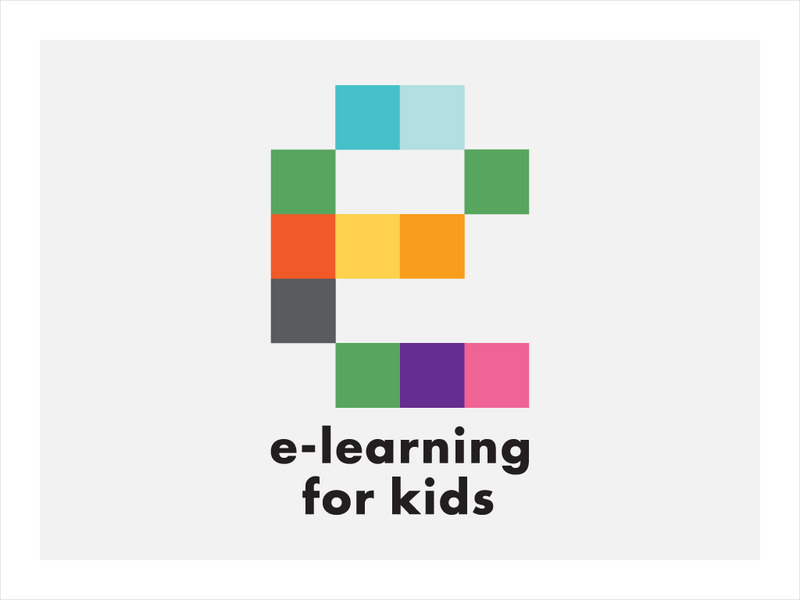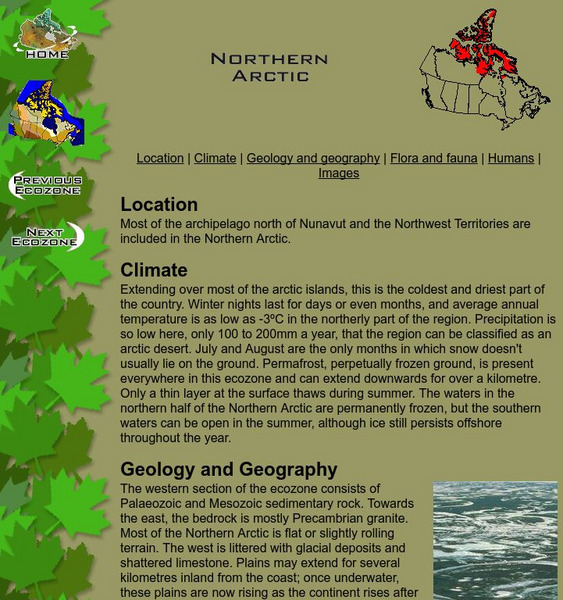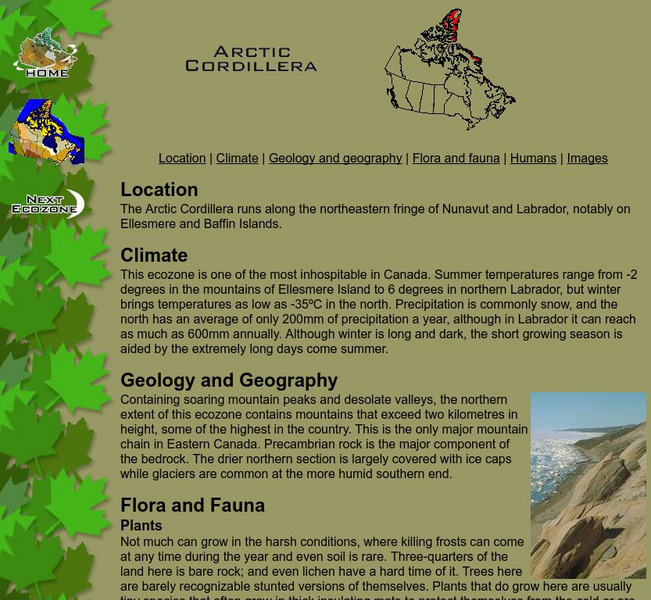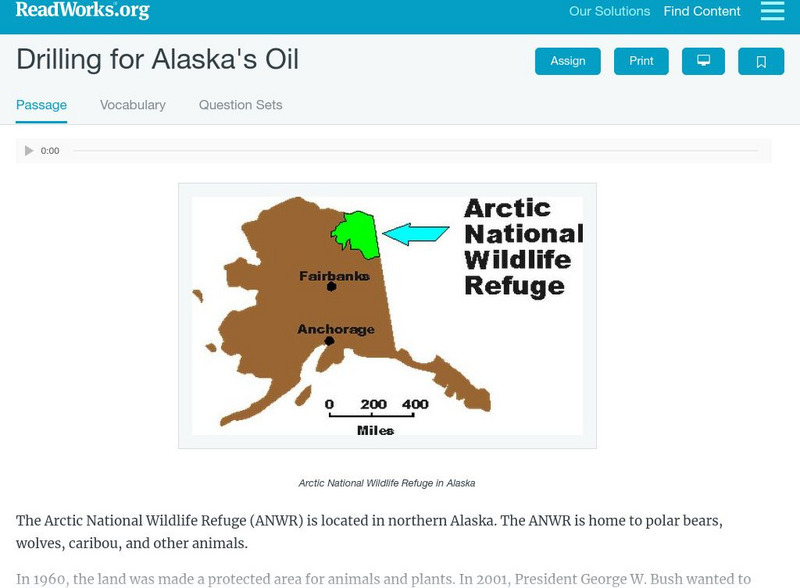Curated OER
One Grain at a Time
Learners investigate deserts. In this geography lesson, students create a KWL chart about deserts and research information on deserts by using reference books. Learners record the characteristics of deserts and the wildlife which lives...
Curated OER
Bird Buffet
Fifth graders study traits of different bird beaks. In this bird lesson, 5th graders explore the function and usefulness of different inherited traits of birds.
Curated OER
Seasons
Students name the 4 seasons, discussing the weather, plant life, animal life and and activities of each. Students read the book titled, "Hello Arctic," and and discuss changes in seasons that accompany the story. Students complete...
Curated OER
Energy Flow in Ecosystems
Students, in groups, create a slide show about the ecosystem and answer critical thinking questions based on their research.
Curated OER
Tic Tac Know Kingdoms
In this PowerPoint, students participate in a variation of tic tac toe in which questions about the animal and plant kingdom are presented and students move to various locations on the game board.
Curated OER
Seasons
First graders investigate the four seasons of the year. In this seasons lesson, 1st graders identify the correct order of seasons, discover different climates, and examine how to dress appropriately for each season.
Curated OER
Sea Secrets
Students study the following: For centuries, people have been challenged by the mysteries that lie beneath the blue depths of our ocean planet. Very little was known about the ocean until late in the nineteenth century, although nearly...
Curated OER
Bountiful Biomes
Students research five different biomes while working in groups. They complete a graphic organizer with the information.
Curated OER
Looking at the Community Tree
Third graders review the characteristics of living and nonliving organisms. As a class, they observe a tree and describe the interactions between the living and nonliving organisms surrounding it. To end the instructional activity,...
Curated OER
Love of Learning
Third graders discuss times when learning has been fun and when it hasn't. They imagine that the are going for a ride in an aeroplane. Students imagine that they are looking through the window at the land below, they see the uneven shape...
Curated OER
Happy Habitats
Students explore different habitats. In this habitat lesson, students investigate four different habitats through participating in a WebQuest. Students create an animal web using Kidspiration or a video documentary upon completing the...
Curated OER
Our Special Planet Earth
Students explore what is special about our planet. They explore the various climates that are found on the planet Earth. Students create an advertisement to convince people why their favorite environment would be the best place to visit.
Science Struck
Science Struck: Tundra Biome: Info About Its Plants and Animals
Describes the features and characteristics of the tundra biome, the different types, where they are found, their climate and seasonal changes, and their plants and animals.
The Wild Classroom
The Wild Classroom: Biomes of the World: Arctic Tundra Biome
Learn all about the Arctic Tundra Biome. This site discusses where it is found, temperatures, precipitation, soil, plants and animals. It also has a few videos to view.
E-learning for Kids
E Learning for Kids: Science: Nova Zembla: Why Do We Need Plants?
This module explores how plants help animals survive. Bobby is a scientist on Antarctica. He discovers many amazing uses of plants. Join him and help him learn.
McGill University
Mc Gill University: Canadian Biodiversity: Ecozones: Northern Arctic
A brief, concise description of the chain of islands that form most of the archipelago north of Nunavut and the Northwest Territories. It includes an excellent collection of images of the landscape as well as those of animals and birds...
Other
Polar Continental Shelf Project for Kids!
Visit this resource to learn about the geography, wild life, plants and people of Polar Continental Shelf in Canada's Arctic. Students can take a quiz to see how much they have learned.
Center for Educational Technologies
Wheeling Jesuit University: Arctic Tundra Biome
Provides text and pictures on the arctic tundra, its animals, plants, and their adaptations.
McGill University
Mc Gill University: Canadian Biodiversity: Ecozones: Southern Arctic
A brief, concise description of the Southern Arctic ecozone which extends across the northern edge of the continental Northwest Territories and Quebec. It includes a collection of images of the landscape as well as those of animals and...
McGill University
Mc Gill University: Canadian Biodiversity: Ecozones: Arctic Cordillera
A concise description of the Arctic Cordillera that runs along the northeastern fringe of Nunavut and Labrador. It includes an excellent collection of images of the landscape as well as those of animals and birds native to the location....
Woods Hole Oceanographic Institution
Polar Discovery: Compare the Poles
A detailed comparison of many aspects of the two polar regions. Includes physical features, seasons, weather, types of ice, plants and animals, human population, and climate change.
McGill University
Mc Gill University: Canadian Biodiversity: Ecozones: Arctic Archipelago Marine
The Arctic Archipelago Marine ecozone includes Hudson Bay and most of the water surrounding the islands of Nunavut and the Northwest Territories. This is a brief, concise description of the location, climate, geology, and flora and...
Read Works
Read Works: Drilling for Alaska
[Free Registration/Login Required] Students read about drilling for oil in Alaska. A question sheet is available to help students build skills in comparing and contrasting.























